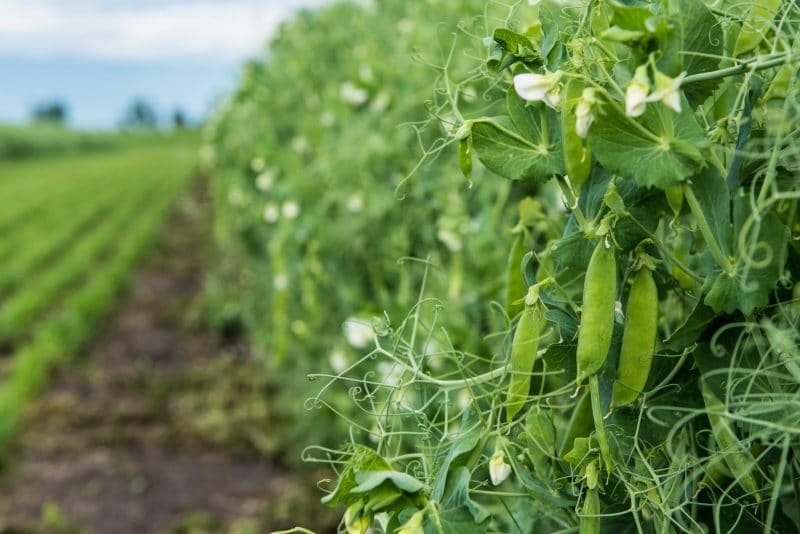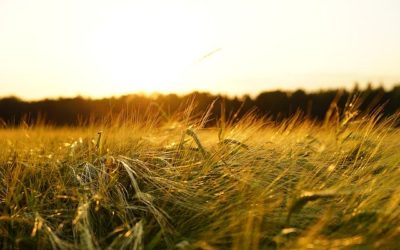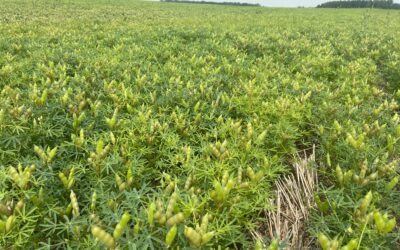- Look after your seed quality
- Double check your seed quality — remember fields sprayed with a pre-harvest product could suffer damage to seed quality. Be sure to test your seed, experts recommend conducting a germination and vigor test with disease screening.
- Mind the concussion factor — many pulse crops have very fragile seed coats and are more susceptible to mechanical damage than cereal seeds. Seed which gets “beat-up” can quickly lose quality due to mechanical damage. Use conveyers and “ladders” as much as possible in handling systems. Try to handle your pulse crop seed as little as possible to lower the risk of damage. Further, seed which is very dry or extremely cold is brittle and fragile.
- If you find yourself in a position in which you need to purchase seed, talk to your seed supplier sooner versus later. Planning is key to securing the variety and quantity of good quality seed which fits your agronomic area.
- Seed treatments — an important ingredient to consider for integrated pest management (IPM)
- Integrating a seed protectant into your IPM program takes forethought. Knowing which insects and diseases affect pulse crops in your fields, as well as those in your surrounding area is key to making the proper decision regarding seed treatments. Remember, some diseases like Aphanomyces cannot be mitigated with seed treatment products, which is why field selection is important.
- Application matters — even application of the proper label rate of seed treatment products directly affects efficacy, resistance management and user safety. Seed growers, retailers and seed processors often have commercial application equipment which can accurately deliver the proper rate the proper way.
- Also be mindful of incompatibilities of fungicides with some rhizobia inoculant products.
- Inoculate
- Unleash the power of the pulse by using the proper inoculant — inoculants come in a variety of formulations: liquid, granular and peat-based. Inoculants are critical in nitrogen fixation of pulse crops and are species (strain) specific for each crop. Be sure to use the correct strain by consulting the label prior to application.
- Always follow the manufacturers recommendations for using inoculants — inoculants do have a shelf life as well as storage rules. Generally, it’s recommended you store them in a cool, dark location. Most manufactures recommend applying inoculant only to seed intended for planting within a specified number of hours. Typically, there are clear recommendations for safe intervals in which they can be mixed into a slurry (if applicable) and applied to the seed. Pay attention to the fine print of the inoculant label, most suppliers have toll-free numbers and/or salespeople who can answer any questions.
- As mentioned before, check compatibility with any fungicidal or insecticidal seed protectants which may be applied in conjunction with an inoculant.
- Seeding tips
- Field selection plays an important role in disease and weed management — be mindful as pulse crops are not strong early season weed competitors and herbicide options are limited. Selecting a clean field is an important step in a weed control program. Avoid the temptation to apply pre-seed herbicides as a post seeding, but pre-emergence timing as crop damage risk escalates. Be mindful of possible herbicide carryover which can vary between products, soil types, as well as in-season rainfall.
- Even though many pulse crops have relatively large seed size, pulse crops can be very susceptible to fertilizer toxicity. Consult with your agronomist or fertilizer supplier for maximum rates which can be safely placed with the seed.
- Seed early — faba beans, peas, lentils and chickpeas all have growing points below the soil surface, thus the risk of catastrophic frost damage is reduced as the soil acts as insulation to protect the nodes from a hint of frost. Soybeans and dry beans do have a different growth habit though, with the growing points being above the soil surface which dramatically reduces frost tolerance.
- Calibrate and pay attention to seeding equipment settings — high fan speeds on air seeders can contribute to mechanical damage of fragile and/or brittle seed coats.
- Optimum seeding depth of pulse crops range from 1.5 to two inches. Also attempt to seed into moist seed beds to optimize germination.
An Alberta Scientist is Playing a Key Role in a First-of-its-Kind Barley Agronomy Research Program
GrowBarley will take the crop to new heights as modern varieties need a solid agronomy package. Big things are ...





